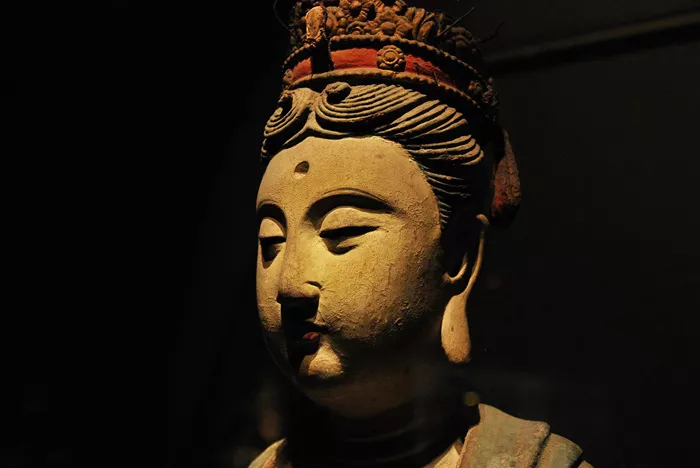Incorporating a Buddha statue into your home can bring tranquility, positivity, and spiritual depth to your living space. To maximize these benefits, it’s essential to place the statue thoughtfully, respecting both traditional guidelines and the principles of Feng Shui and Vastu Shastra. This article provides comprehensive guidance on selecting the ideal location for a Buddha statue in your home.
Understanding the Significance of Buddha Statues
Before delving into placement specifics, it’s important to recognize the cultural and spiritual significance of Buddha statues. These statues are not mere decorative items; they embody the teachings of Siddhartha Gautama, the founder of Buddhism, who attained enlightenment and shared insights on peace, compassion, and mindfulness. Displaying a Buddha statue serves as a reminder of these virtues and can inspire a serene and harmonious environment.
General Guidelines for Buddha Statue Placement
When determining where to place a Buddha statue in your home, consider the following factors:
Respect and Reverence: The statue should be positioned in a manner that reflects respect. Avoid placing it on the floor or in areas associated with negative energy.
Avoid Direct Alignment with Doors: While it’s beneficial for the Buddha to be near the main entrance to welcome positive energy, the statue should not be directly in line with the door, as this can lead to energy rushing past it without proper interaction.
Elevation: Place the statue at eye level or higher. This positioning conveys respect and ensures the statue is viewed appropriately.
Ideal Locations for Buddha Statues in the Home
Based on traditional practices and Feng Shui principles, here are some recommended locations for placing a Buddha statue:
1. Living Room
The living room is a central space where family members gather. Positioning a Buddha statue here can promote harmony and positive energy flow. Consider the following:
Facing the Main Door: Placing the statue so that it faces the main entrance can help in transforming incoming energy into positive chi, enhancing the overall ambiance of the home.
Corner Placement: Positioning the statue in the northeast corner of the living room is considered auspicious and aligns with Vastu Shastra principles, inviting prosperity and peace.
2. Meditation or Prayer Room
If your home includes a dedicated space for meditation or prayer, this is an ideal location for a Buddha statue. It reinforces the spiritual atmosphere and supports mindfulness practices. Key considerations include:
Cleanliness and Serenity: Ensure the area is clean, quiet, and free from distractions to facilitate deep meditation and reflection.
Proper Orientation: Position the statue so that it faces towards the room, promoting a sense of peace and focus during meditation sessions.
3. Entryway
The entrance of your home is the threshold through which energy enters. Placing a Buddha statue near the entryway can serve as a guardian, welcoming positive energy and deterring negativity. Considerations include:
Facing Inward: The statue should face into the home, inviting good fortune and harmony.
Avoid Direct Alignment with the Door: Ensure the statue is not directly in line with the door to prevent energy from bypassing it.
4. Bedroom
While the bedroom is primarily a space for rest, placing a Buddha statue here can promote peaceful sleep and tranquility. Guidelines for bedroom placement include:
Avoid Facing the Bed: The statue should not face the bed directly, as this can create an unsettling atmosphere.
Positioning: Place the statue on a bedside table or a shelf at eye level, ensuring it does not dominate the space but adds to the room’s serenity.
5. Dining Area
The dining area is associated with nourishment and family bonding. A Buddha statue here can enhance gratitude and mindfulness during meals. Considerations include:
Subtle Placement: Place the statue on a side table or shelf, ensuring it complements the dining experience without being the focal point.
Avoid Direct Alignment with the Table: The statue should not be directly above the dining table, as this can create an oppressive feeling.
6. Garden or Outdoor Space
If you have a garden or outdoor area, a Buddha statue can create a serene retreat. Guidelines for outdoor placement include:
Protected Location: Place the statue in a sheltered spot to protect it from harsh weather conditions.
Surrounded by Nature: Positioning the statue amidst greenery enhances the connection to nature and promotes a calming environment.
Additional Considerations
Material and Size: Choose a statue that complements your home’s decor and the intended space. Materials like stone, metal, or resin each have their own aesthetic and durability considerations.
Regular Maintenance: Keep the statue clean and in good condition to preserve its beauty and spiritual significance, reinforcing its role in promoting harmony and balance.
Avoid Clutter: Ensure the area around the statue is free from clutter, as a clean space enhances the flow of positive energy.
Conclusion
Incorporating a Buddha statue into your home, when placed thoughtfully, can enhance the spiritual and aesthetic ambiance of your living space. By considering traditional guidelines and principles of Feng Shui and Vastu Shastra, you can select locations that promote peace, prosperity, and positive energy throughout your home. Remember, the key is to place the statue with respect and intention, ensuring it contributes to a harmonious and balanced environment.

